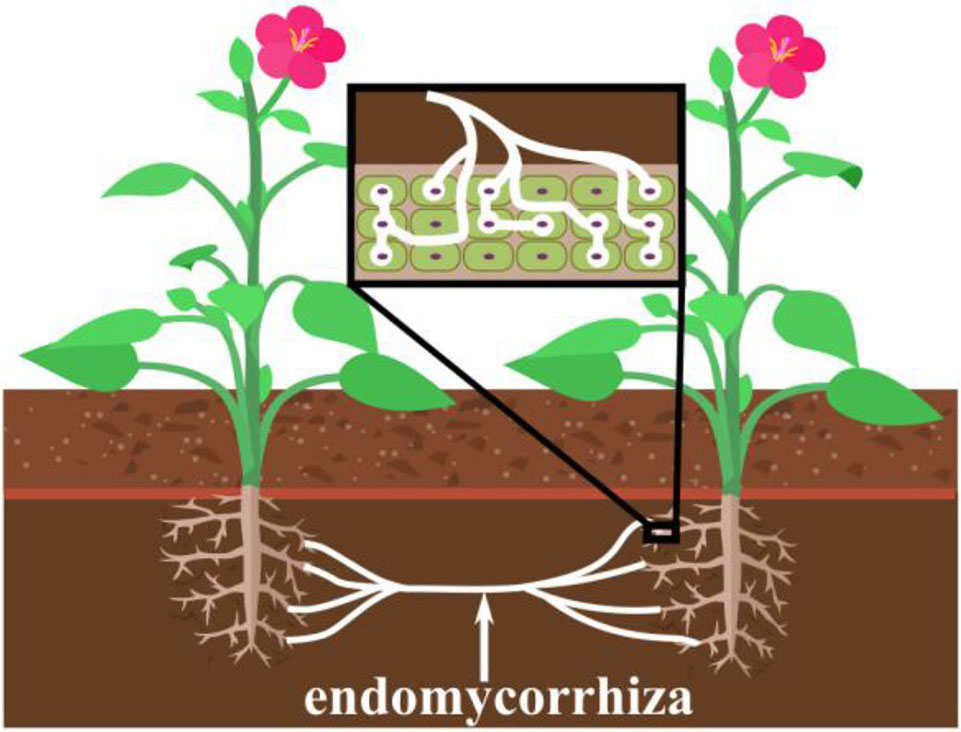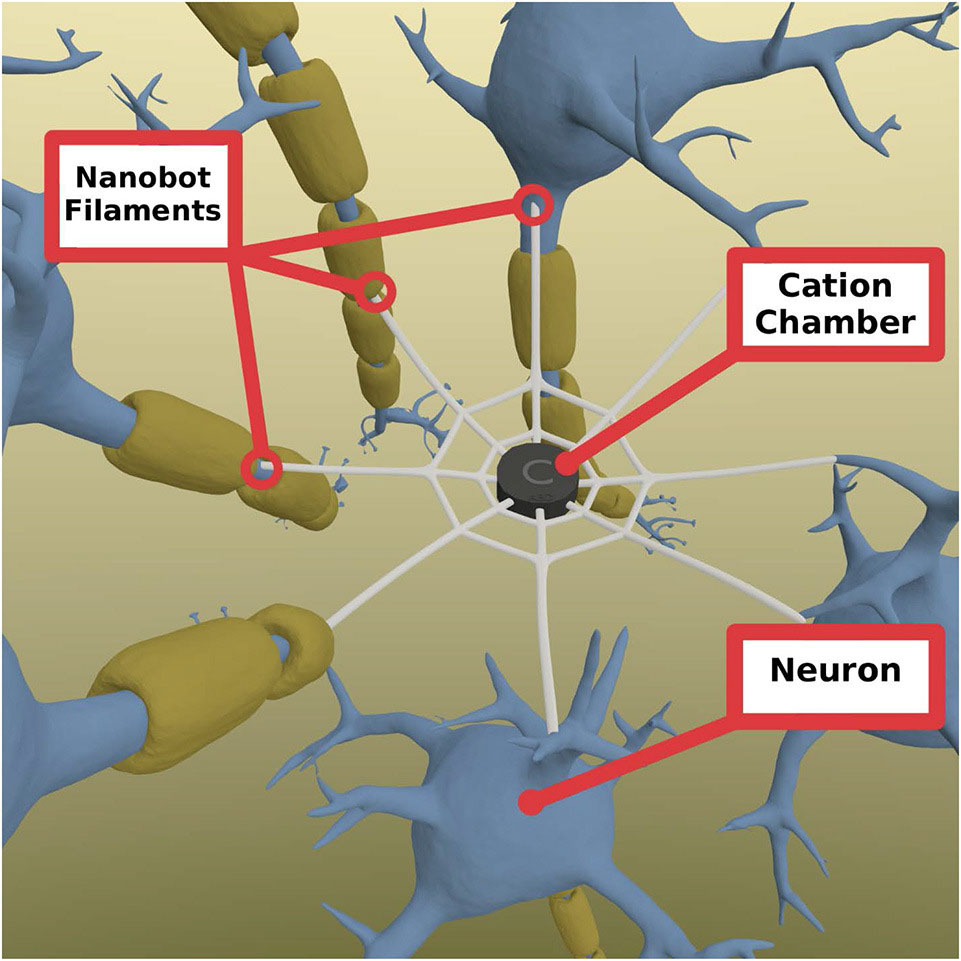| Feb 21, 2022 | |
Meet ELI - a nanotechnology neuroprosthetic that may one day integrate with neurons |
|
| (Nanowerk Spotlight) For over a generation several types of medical neuroprosthetics have been developed, which have improved the lives of thousands of individuals. For instance, cochlear implants have restored functional hearing in individuals with severe hearing impairment. | |
| Further advances in motor neuroprosthetics are attempting to restore motor functions in tetraplegic, limb loss and brain stem stroke paralysis subjects. | |
| Currently, scientists are working on various kinds of brain/machine interfaces in order to restore movement and partial sensory function. One such device is the 'Ipsihand' that enables movement of a paralyzed hand. The device works by detecting the recipient’s intention in the form of electrical signals, thereby triggering hand movement. | |
| Another recent development is the 12 month BMI gait neurohabilitation program that uses a visual-tactile feedback system in combination with a physical exoskeleton and EEG operated AI actuators while walking. This program has been tried on eight patients with reported improvements in lower limb movement and somatic sensation. | |
| Surgically placed electrode implants have also reduced tremor symptoms in individuals with Parkinson’s disease. | |
| Although neuroprosthetics have provided various benefits they do have their problems. Firstly, electrode implants to the brain are prone to degradation, necessitating new implants after a few years. Secondly, as in any kind of surgery, implanted electrodes can cause post-operative infection and glial scarring. Furthermore, one study showed that the neurobiological efficacy of an implant is dependent on the rate of speed of its insertion. | |
| But what if humans designed a neuroprosthetic, which could bypass the medical glitches of invasive neuroprosthetics? However, instead of connecting devices to neural networks, this neuroprosthetic would directly merge with neurons – a novel step. Such a neuroprosthetic could radically optimize treatments for neurodegenerative disorders and brain injuries, and possibly cognitive enhancement. | |
| A team of three international scientists has recently designed a nanobased neuroprosthetic, which was published in Frontiers in Neuroscience ("Integration of Nanobots Into Neural Circuits As a Future Therapy for Treating Neurodegenerative Disorders"). | |
| An interesting feature of their nanobot neuroprosthetic is that it has been inspired from nature by way of endomyccorhizae – a type of plant/fungus symbiosis, which is over four hundred million years old. During endomyccorhizae, fungi use numerous threadlike projections called mycelium that penetrate plant roots, forming colossal underground networks with nearby root systems. During this process fungi take up vital nutrients while protecting plant roots from infections – a win-win relationship. Consequently, the nano-neuroprosthetic has been named ‘endomyccorhizae ligand interface’, or ‘ELI’ for short. | |
 |
|
| Figure 1. The concept of the endomycorrhiza and its mechanism for penetration into plant root cells of the plants’ roots, and how it can simultaneously connect two different plants. This action is believed to transfer biological properties between the plants, such as the immune response of one plant to the other. (Reprinted with permission by Frontiers Media S.A.) | |
| ELI’s design is comprised of a chamber containing positively charged ions called cations and multiple filaments which extend from the cation chamber. The nanobot filaments form a mesh, and extend to neurons. | |
| It is speculated that each filament tip will be able to penetrate specific sites of a neuron such as its cell body, axon, and dendrites, thereby achieving connectivity. This may be made possible by using the biochemical properties of neuronal membranes. | |
| In theory, once a connection is established ELI will be able to transmit action potentials between connecting neurons and convey them back to neurons. Furthermore, ELI will also be able to improve the speed of action potentials. | |
| But here is the key. Just like in ecological systems, which can repair and self-correct themselves, ELI will be able to by-pass damaged pre-synaptic neurons and transmit action potentials to nearby connected neurons. | |
| In this way, ELI will function to recover disrupted neural pathways seen in neurodegenerative disorders such as Alzheimer’s disease, Parkinson’s disease, and other brain disorders. | |
| ELI would be engineered to use the surrounding electro-chemical cerebral environment as an energy source. | |
 |
|
| Figure 2. Nanobot mesh consisting of a central chamber of cations that allow cation to enter selectively and is able to store them for a short period of time if needed. These cations can be released at when the signal comes from any of the connected neurons through the fibers. The fibers are radial extensions from the mesh that connect to other neurons and penetrates them to open inside the cell. They are able to sense the actiton potential and send a signal back to the champer to open the chamber gates to allow cations to travel to each of the connected neurons. Chamber gates (not shown) are gates connecting the chamber and the fibers that open when a signal is received. Note: the diameter of the fibers is greatly enhanced for visual presentation purposes. (Reprinted with permission by Frontiers Media S.A.) | |
| Dr Arthur Saniotis from the Ludwik Hirszfeld Institute of Immunology and Experimental Therapy in Poland, claims that unlike current neuroprosthetics which follow a mechanistic approach between a device and controller, ELI would interact with the neural environment rather than just acting upon it. | |
| “The idea of ELI integrating with the neural matrix promises better outcomes rather than the kind of digital based linear approach, which we have been using for years,” Saniotis claims. | |
| In return, neural networks will provide ELI a feasible ‘learning’ environment for its correct integration. Emeritus Professor Maciej Henneberg, who co-designed ELI, points out that unlike existing neuroprosthetic devices, which are based on digital computer processing, ELI is intended to enhance qualities of the human analog. This is a major difference. | |
| Since this kind of nano-neural symbiosis not only conforms to nature’s principles, it is imaginable that ELI could also be designed for cognitive or sensory enhancement. As for now, developments in nanotechnology and neuroscience are making the construction of ELI achievable. | |
| By Dr Arthur Saniotis and Prof Maciej Henneberg, Department of Anthropology, Ludwik Hirszfeld Institute of Immunology and Experimental Therapy, Polish Academy of Sciences; and Biological Anthropology and Comparative Anatomy Research Unit, Adelaide Medical School, University of Adelaide. | |
|
Become a Spotlight guest author! Join our large and growing group of guest contributors. Have you just published a scientific paper or have other exciting developments to share with the nanotechnology community? Here is how to publish on nanowerk.com. |
|
